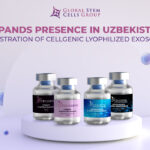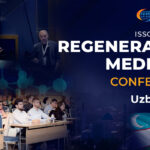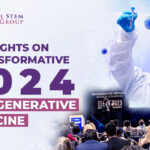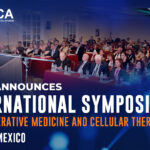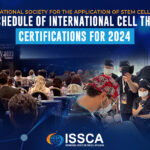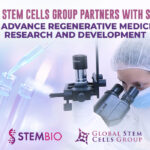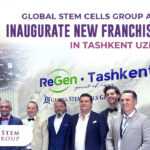Although the clinical demand for bioengineered blood vessels continues to rise, current options for vascular conduits remain limited. The synergistic combination of emerging advances in tissue fabrication and stem cell engineering promises new strategies for engineering autologous blood vessels that recapitulate not only the mechanical properties of native vessels but also their biological function. Here we explore recent bioengineering advances in creating functional blood macro and microvessels, particularly featuring stem cells as a seed source. We also highlight progress in integrating engineered vascular tissues with the host after implantation as well as the exciting pre-clinical and clinical applications of this technology.
Ischemic diseases, such as atherosclerotic cardiovascular disease (CVD), remain one of the leading causes of mortality and morbidity across the world (GBD 2015 Mortality and Causes of Death Collaborators, 2016, Mozaffarian et al., 2016). These diseases have resulted in an ever-persistent demand for vascular conduits to reconstruct or bypass vascular occlusions and aneurysms. Synthetic grafts for replacing occluded arterial vessels were first introduced in the 1950s following surgical complications associated with harvesting vessels, the frequent shortage of allogeneic grafts, and immunologic rejection of large animal-derived vessels. However, despite advances in pharmacology, materials science, and device fabrication, these synthetic vascular grafts have not significantly decreased the overall mortality and morbidity (Nugent and Edelman, 2003, Prabhakaran et al., 2017). Synthetic grafts continue to exhibit a number of shortcomings that have limited their impact. These shortcomings include low patency rates for small diameter vessels (< 6 mm in diameter), a lack of growth potential for the pediatric population necessitating repeated interventions, and the susceptibility to infection. In addition to grafting, vascular conduits are also needed for clinical situations such as hemodialysis, which involves large volumes of blood that must be withdrawn and circulated back into a patient several times a week for several hours.
In addition to large-scale vessel complications, ischemic diseases also arise at the microvasculature level (< 1 mm in diameter), where replacing upstream arteries would not address the reperfusion needs of downstream tissues (Hausenloy and Yellon, 2013, Krug et al., 1966). Microvascularization has proven to be a critical step during regeneration and wound healing, where the delay of wound perfusion (in diabetic patients, for example) significantly slows down the formation of the granulation tissue and can lead to severe infection and ulceration (Baltzis et al., 2014, Brem and Tomic-Canic, 2007, Randeria et al., 2015).
In order to design advanced grafts, it is important to take structural components of a blood vessel into consideration, as understanding these elements is required for rational biomaterial design and choosing an appropriate cell source. Many of the different blood vessel beds also share some common structural features. Arteries, veins, and capillaries have a tunica intima comprised of endothelial cells (EC), which regulate coagulation, confer selective permeability, and participate in immune cell trafficking (Herbert and Stainier, 2011, Potente et al., 2011). Arteries and veins are further bound by a second layer, the tunica media, which is composed of smooth muscle cells (SMC), collagen, elastin, and proteoglycans, conferring strength to the vessel and acting as effectors of vascular tone. Arterioles and venules, which are smaller caliber equivalents of arteries and veins, are comprised of only a few layers of SMCs, while capillaries, which are the smallest vessels in size, have pericytes abutting the single layer of ECs and basement membrane. Vascular tissue engineering has evolved to generate constructs that incorporate the functionality of these structural layers, withstand physiologic stresses inherent to the cardiovascular system, and promote integration in host tissue without mounting immunologic rejection (Chang and Niklason, 2017).
A suitable cell source is also critical to help impart structural stability and facilitate in vivo integration. Patient-derived autologous cells are one potential cell source that has garnered interest because of their potential to minimize graft rejection. However, isolating and expanding viable primary cells to a therapeutically relevant scale may be limited given that patients with advanced arterial disease likely have cells with reduced growth or regenerative potential. With the advancement of stem cell (SC) technology and gene editing tools such as CRISPR, autologous adult and induced pluripotent stem cells (iPSCs) are emerging as promising alternative sources of ECs and perivascular SMCs that can be incorporated into the engineered vasculature (Chan et al., 2017, Wang et al., 2017).
Importantly, a viable cell source alone is not sufficient for therapeutic efficacy. Although vascular cells can contribute paracrine factors and have regenerative capacity, merely delivering a dispersed mixture of ECs to the host tissue has shown limited success at forming vasculature or integrating with the host vasculature (Chen et al., 2010). Therefore, recent tissue engineering efforts have instead focused on recreating the architecture and the function of the vasculature in vitro before implantation, with the hypothesis that pre-vascularized grafts and tissues enhance integration with the host. In this review, we explore recent advances in fabricating blood vessels of various calibers, from individual arterial vessels to vascular beds comprised of microvessels, and how these efforts facilitate the integration of the implanted vasculature within a host. We also discuss the extent to which SC-derived ECs and SMCs have been incorporated into these engineered tissues.
Clinical Applications
The first reported successful clinical application of TEBV in patients was performed by Shin’oka et al., who implanted a biodegradable construct as a pulmonary conduit in a child with pulmonary atresia and single ventricle anatomy (Shin’oka et al., 2001). The construct was composed of a synthetic polymer mixture of L-lactide and e-caprolactone, and it was reinforced with PGA and seeded with autologous bone marrow-derived mesenchymal stem cells (BM-MSCs). The authors demonstrated patency and patient survival 7 months post-implant, and expanded their study to a series of 23 implanted TEBVs and 19 tissue patch repairs in pediatric patients (Hibino et al., 2010). They were noted to have no graft-related mortality, and four patients required interventions to relieve stenosis at a mean follow-up of 5.8 years. The first sheet-based technology to seed cultured autologous cells, developed by L’Heureux et al., was iterated by the group to induce cultured fibroblast cell sheet over a 10-week maturation period and produce tubules of endogenous ECM over a production time ranging between 6 and 9 months. They dehydrated and provided a living adventitial layer before seeding the constructs with ECs (L’Heureux et al., 2006). Their TEBV, named the Lifeline graft, was implanted in 9 of 10 enrolled patients with end-stage renal disease on hemodialysis and failing access grafts in a clinical trial. Six of the nine surviving patients had patent grafts at 6 months, while the remaining grafts failed due to thrombosis, rejection, and failure (McAllister et al., 2009). An attempt to create an “off the shelf” version of this graft in which pre-fabricated, frozen scaffolds were seeded with autologous endothelium prior to implantation led to 2 of the 3 implanted grafts failing due to stenosis, and one patient passed away due to graft infection (Benrashid et al., 2016).
Most recently, results were reported for the phase II trial of the decellularized engineered vessel Humacyte in end-stage renal disease patients surgically unsuitable for arterio-venous fistula creation (Lawson et al., 2016). This clinical scenario offers a relatively captive patient population in which graft complications are unlikely to be limb or life-threatening, and infectious and thrombotic event rates for traditional materials such as ePTFE are high (Haskal et al., 2010). The manufacturers seeded a 6mm PGA scaffold with SMCs from deceased organ and tissue donors and decellularized the scaffold following ECM production in an incubator coupled with a pulsatile pump prior to implantation. Humacyte demonstrated 63% primary patency at 6 months, 28% at 12 months, and 18% at 18 months post-implant in 60 patients. Ten grafts were abandoned. However, 12-month patency and mean procedure rate of 1.89 per patient-year to restore patency were comparable to PTFE grafts, while higher secondary patency rates were observed (89% versus 55%–65% at 1 year) (Huber et al., 2003, Lok et al., 2013). Although Humacyte revealed no immune sensitization and a lower infection rate than PTFEs (reported up to 12%) (Akoh and Patel, 2010), there remains much work to be done to improve primary patency and reduce the need for interventions.
Harnessing the regenerative functions reported in ECs derived from adult stem cells and iPSCs offers the promise of improving TEBV patency. Mcllhenny et al. generated ECs from adipose-derived stromal cells, transfected them with adenoviral vector carrying the endothelial nitric oxide synthase (eNOS) gene, and seeded the ECs onto decellularized human saphenous vein scaffolds (McIlhenny et al., 2015). They hypothesized that through inhibition of platelet aggregation and adhesion molecule expression, nitric oxide synthesis would prevent thrombotic occlusion in TEBV. Indeed, they reported patency with a non-thrombogenic surface 2 months post-implantation in rabbit aortas. While introducing additional complexities, engineering ECs and SMCs with other regenerative, anti-inflammatory, anti-thrombotic genes could perhaps bridge the functional difference between SC-derived cells and native primary cells.

